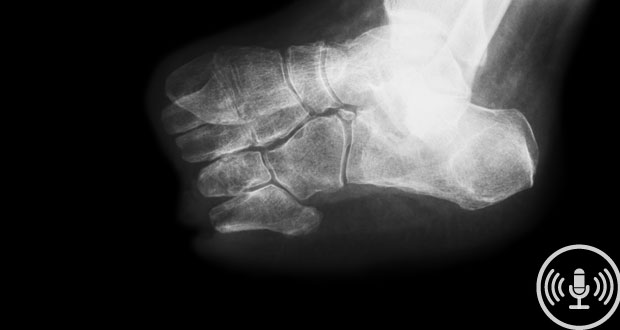Investment in proven diabetic foot care a ‘no-brainer’

Thousands of people with diabetic foot disease could be spared amputations and lengthy hospitalisations if government invests in proven treatments, new research suggests.
The study also found the Australian health system could save $2.7 billion over five years if people with diabetic foot ulcers, in particular, had access to evidence-based prevention and treatment through Medicare.
These treatments, per the Australian diabetic foot disease guidelines, include receiving regular care by a multi-disciplinary team including a doctor and podiatrist, patient education, appropriate wound dressings, appropriate footwear, and moonboots to offload pressure under the foot.
Study co-author Peter Lazzarini, Queensland University of Technology senior research fellow and co-chair of Diabetic Foot Australia, said there are about 50,000 Australians with a diabetic foot ulcer today and hundreds of thousands that are at high risk of developing one.
“This study shows if we simply fund proven recommended diabetic foot disease care we will not only save limbs and lives, but also we will save billions of dollars for Australia, even after factoring in the increased investment in proven care,” Lazzarini said.
He said many Australians with diabetic foot ulcers don’t receive the best care available and that a major reason for this was lack of reimbursement through Medicare or the Pharmaceutical Benefits Scheme (PBS) for recommended treatments.
Health economist Dr Rosana Norman, who led the study, along with Qinglu Cheng at the QUT-based Australian Centre for Health Services Innovation, said the findings suggest an investment in proven diabetic foot care is a no-brainer. “Not only do you get better clinical outcomes, you also save money.”
The research team found data from Australian and international studies to determine the probabilities of patients healing, ulcerating, needing hospitalisations, amputations and dying when they received what was deemed best care and when they received the usual care provided in Australia.
“We then entered these data into a widely used economic model to forecast the costs and quality of life associated with best care, compared with usual care over five years.
“What we found was quite startling – not only do patients receiving best care have faster ulcer healing, fewer recurrent ulcers, hospitalisations and amputations, they also have a better quality of life and we still save thousands of dollars per patient," Norman said.
Lazzarini said the findings confirm that subsidising the recommendations in the official Australian diabetic foot guidelines will vastly improve the lives of thousands of Australians and boost Australia’s budget.
Email: [email protected]





